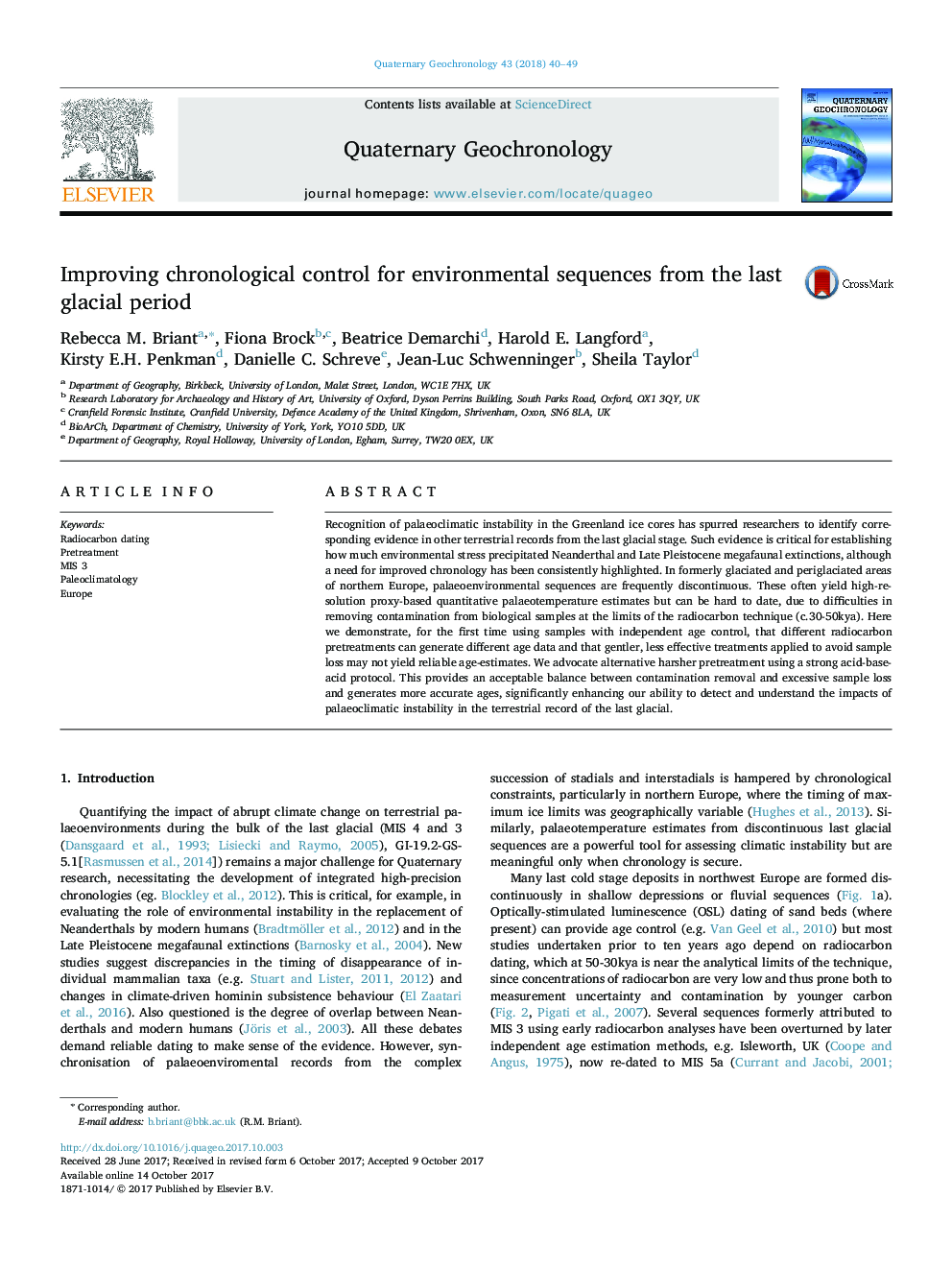| Article ID | Journal | Published Year | Pages | File Type |
|---|---|---|---|---|
| 5784932 | Quaternary Geochronology | 2018 | 10 Pages |
Abstract
Recognition of palaeoclimatic instability in the Greenland ice cores has spurred researchers to identify corresponding evidence in other terrestrial records from the last glacial stage. Such evidence is critical for establishing how much environmental stress precipitated Neanderthal and Late Pleistocene megafaunal extinctions, although a need for improved chronology has been consistently highlighted. In formerly glaciated and periglaciated areas of northern Europe, palaeoenvironmental sequences are frequently discontinuous. These often yield high-resolution proxy-based quantitative palaeotemperature estimates but can be hard to date, due to difficulties in removing contamination from biological samples at the limits of the radiocarbon technique (c.30-50kya). Here we demonstrate, for the first time using samples with independent age control, that different radiocarbon pretreatments can generate different age data and that gentler, less effective treatments applied to avoid sample loss may not yield reliable age-estimates. We advocate alternative harsher pretreatment using a strong acid-base-acid protocol. This provides an acceptable balance between contamination removal and excessive sample loss and generates more accurate ages, significantly enhancing our ability to detect and understand the impacts of palaeoclimatic instability in the terrestrial record of the last glacial.
Related Topics
Physical Sciences and Engineering
Earth and Planetary Sciences
Geochemistry and Petrology
Authors
Rebecca M. Briant, Fiona Brock, Beatrice Demarchi, Harold E. Langford, Kirsty E.H. Penkman, Danielle C. Schreve, Jean-Luc Schwenninger, Sheila Taylor,
